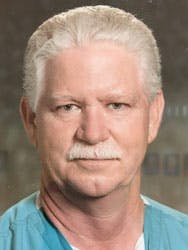Instructions for use (IFU) is a hot button topic among those who develop them — device manufacturers — those who use them — central sterile/sterile processing (CS/SPD) professionals — and many others involved in the life cycle of medical devices — surgeons, operating room (OR) staff, materials managers, etc.
IFUs is a topic that many people love to hate. There is also some amazing work being performed by manufacturers, CS/SPD professionals and others in the healthcare industry to improve IFU usability and accessibility. These parties recognize that IFUs as they currently stand are at best a source of frustration, and at worst a threat to patient safety.
Michele DeMeo, CSPDT, CRCST, Independent CS/SPD Consultant at MDD Virtual Consulting, stated: “This is such a complex topic for a single article. In fact, books could be written on the subject of IFUs for devices, instruments, processors and other technologies or sets. It is simply a topic with few boundaries.”
Healthcare Purchasing News explores industry efforts to standardize IFU formats, the need for IFU validation, the latest industry guidance for the CS/SPD, and present real-world challenges and best practices from CS/SPD professionals.
IFU standardization: a collaborative effort
Since the Food and Drug Administration (FDA) issued its 2015 guidance, Reprocessing Medical Devices in Health Care Settings: Validation Methods and Labeling, Guidance for Industry and Food and Drug Administration Staff,1 manufacturers, CS/SPD professionals and others have been working on ways to improve IFUs. The guidance states that manufacturers must provide customers with IFUs that describe in detail “instructions for a reprocessing method that reflects the physical design of the device, its intended use, and the soiling and contamination to which the device will be subject during clinical use.”1
What’s interesting is that some of the parties that have been tackling the IFU challenge independently have discovered they have been working toward a very similar solution.
“It is not that IFUs were not important years ago, they were and also a requirement to follow, even ‘back then,’” said DeMeo. “The difference, unfortunately, was that little attention was given to them by too few facilities. In addition, even less attention was placed to not only every aspect of the IFU, but also its relationship to the total process and practices and processors used to decontaminate, assemble, sterilize, store then re-use the item(s).”
A CS/SPD approach
In 2014, Jack LeClair, RN, CSPDT, Regional Director, System Services, Director of Operations, Sterile Processing Department, Memorial Hermann Healthcare System, decided to tackle the variability and complexity of IFUs in an effort to simplify cleaning processes for his department’s technicians.
LeClair first went through IFUs for the products his department was responsible for processing and categorized them into what he calls “families” based on their cleaning requirements. For example, those with the least complex designs (which LeClair refers to as “knife and fork type instruments”) were assigned to class one. LeClair progressed through more complex instruments and in the end had designated eight categories of devices.
Next, he took the “worst case cleaning scenario” for each category of instrument — those that required the most effort to clean — and used that as the basis of the cleaning protocol for that category. LeClair is now working to integrate the protocols into Memorial Hermann’s instrument tracking system so that when a technician scans a tray the system will display the correct cleaning protocol.
A manufacturer’s approach
Joan Spear, RN, MBA, CNOR, CRCST, CSPDT, is a Clinical Consultant for sterile processing, perioperative nursing and medical devices. She has worked with surgical instrument manufacturers to review current validation methods and labeling/IFU in connection with the 2015 FDA guidance and end user needs. As with LeClair, Spear too worked to categorize instruments and develop standardized cleaning protocols for each category.
“One of the first things we did was look for common cleaning practices in the CS/SPD so we could validate the manufacturer’s products against them,” said Spear. “So maybe it is effective to soak a product for 20 minutes, but will we get the same outcome by soaking for five minutes? In a user environment which would you choose?”
Where it all comes together: AAMI Workgroup 12
While they were working on their independent IFU improvement projects, LeClair and Spear became members of the Association for the Advancement of Medical Instrumentation (AAMI) Sterilization Workgroup 12, which has been tasked with developing standardized cleaning protocols for specific categories or “families” of instruments. A device manufacturer would select the protocol that best meets its device and use the protocol as the basis for the product’s IFU. The goal is to help standardize IFU format and cleaning steps across device categories, thereby making it easier for CS/SPD professionals to understand and follow.
LeClair and Spear discovered the similarities in their separate work, and found they were not the only ones who had been categorizing instruments and standardizing protocols.
“There are three instrument manufacturers represented in Workgroup 12 and when we started talking we realized all three had established instrument groupings that were quite similar,” said Spear. “What one manufacturer called “category one” another was calling “group 2” but they were essentially the same cleaning steps.”
“What is terrific is that these manufacturers are willing to share this information within the Workgroup,” said AAMI Workgroup 12 Co-Chair Ralph J. Basile, Vice President of Healthmark. “The more manufacturers that do this, the greater the benefits down the road to healthcare facilities in that there will be less IFU variability and a better chance that technicians can follow them. We also have involvement from end users, testing labs and members of the FDA.”
The finished document will be an annex to AAMI Technical Information Report (TIR) 12,: Designing, testing, and labeling reusable medical devices for reprocessing in health care facilities: A guide for medical device manufacturers. The AAMI TIR 12 is a support document to ISO 17664, Sterilization of medical devices — Information to be provided by the manufacturer for the processing of resterilizable medical devices. Basile notes that the annex is currently in a working draft form and will at some point be available for public comment.
David Hill is a Glasgow-based consultant engineer for medical device decontamination, validation, sterilization and program management with 35 years experience in healthcare. He conducts gap analysis in relation to ISO 17664 requirements, and evaluates process exposure requirements (manual cleaning, automated cleaning and sterilization) using a basic complexity analysis. He has completed this work for lethality exposure comparison between US and UK sterilization.
“Standardized format has been needed for a long time,” said Hill. “Sometimes I get the impression that manufacturers don’t really think enough about CSD capabilities and hide their uncertainty in the IFU. Another issue is the differences between EU and US times and temperatures. Manufacturers often just quote one or the other. I believe it would be a giant leap to develop a united IFU design template. These should already been provided within regulatory standards.”
The elephant in the room: validation
In the April 2017 edition of Healthcare Purchasing News, we published an extensive article on the need for IFU validation, citing the FDA’s 2015 guidance (https://www.hpnonline.com/validated-its-complicated/). For those manufacturers seeking 510(k) approval for new reusable medical devices, the FDA now requires manufacturers to include the testing data that validated their reprocessing instructions. Regretfully, the requirement to validate IFUs does not apply to products already on the market.1
According to James Schneiter, Founder, America’s MedSource, since publication of that article, little has changed in the industry with regards to validated IFUs. He says while efforts to standardize IFUs are beneficial, they are no substitute for independent laboratory validation of a manufacturer’s IFU.
“Another year has gone by and we continue to harm patients because among other things, the FDA refuses to demand that manufacturers validate their IFUs for ALL of the reusable devices they are currently selling,” said Schneiter. “If a manufacturer has validated its IFU, then you know what you can expect in terms of bioload reduction, or elimination, after cleaning. Armed with this information, you can make an informed, quantitative decision as to whether or not that instrument is safe for your patients after reprocessing in your facility.
‘But in the absence of validated IFUs, the manufacturer is simply saying ‘If you can’t see any bioload, then the instrument is clean.’ It is physically impossible for the human eye to see microscopic bioburden, much less biofilm,” he added. “Unless the manufacturer has validated that its cleaning process removes at least 99.9 percent of the bioload, you have no assurance that you are sending a clean, safe instrument back to the OR. As recent lawsuits have shown, healthcare facilities have an ethical, moral and legal obligation to demand validated IFUs from all of their device suppliers.”
A resource for CS/SPD professionals: ANSI/AAMI ST90
While the AAMI Technical Information Report (TIR) 12 is aimed at manufacturers, a new standard issued in June 2017 is geared toward IFU end users: ANSI/AAMI ST90 Processing of health care products—Quality management systems for reprocessing in health care facilities.2
Richard Schule, Director of Clinical Education Services at STERIS Corporation and AAMI Quality Systems for Device Processing Working Group co-chair, notes how the standard speaks to the healthcare organization’s responsibility for not only obtaining and reviewing the manufacturer’s IFUs, but also demonstrating product acceptance criteria, including instructions for inspection of the set or device from cleaning through disinfection or sterilization.
“The new ST90 document speaks to the importance of IFUs as part of the department’s quality management system and the hospitals’ responsibilities with regards to the manufacturers’ instructions,” said Schule. “Structured education, training and competency programs to verify a technician’s ability to follow established processes to achieve quality product is essential. We have a significant opportunity to get the word out and see to it our CS/SPD leadership is aware these standards exist and deployed when processing modalities dictate.”
Efforts to address test soils
Another effort underway to categorize and standardize IFUs is the ASTM International Task Group on Cleanliness of Biomedical Devices (F04.15.17). According to Justin Poulin, Clinical Operations Executive for Northfield Medical, the group is currently drafting testing methods that will help manufacturers meet AAMI and FDA guidelines. The goal is to develop a standard guide for selecting test soils when obtaining cleaning validation for new devices based on the intended clinical use. Further, the task group is developing specific testing protocols and corresponding cleaning methods for removing test soils in the cleaning validation process.
“Standardizing the IFU format and requirements while decreasing variability would be a big step in the right direction to ensure that critical cleaning and sterilization parameters are followed consistently to the benefit of the patient,” said Poulin.
The real world: challenges and best practices from the CS/SPD
Although the industry is working to improve IFUs from many angles, it is important to understand how CS/SPD professionals are using current IFUs to deliver safe and effective products to clinicians.
Manufacturer collaboration
Most manufacturers are unlikely to change IFUs for existing products on their own, therefore some CS/SPD leaders have taken it upon themselves to approach manufacturers with alternative processing steps that better meet the real-world operations of their departments, while yielding the same results.
Loraine Durigan, CRCST, CHL, CIS, Materials Manager and CS Supervisor, Florida Hospital, conducted a trial on one manufacturer’s saws and drills and found it took 40 minutes to sterilize these items according to the IFU. She approached the company and discovered the only reason why they recommended 40 minutes was because this was their European sterilization parameter so they copied and pasted as the parameter for the US.
“Our department follows the manufacturer IFUs to a T but we are also the first ones that will go back to a company and tell them — ‘this is too much you have to revise it,’” said Durigan.
Albert Huether, Director of the Sterile Processing Department at Methodist Healthcare System, San Antonio, notes how his team builds relationships with their manufacturers so that anytime there is an update to an IFU the rep lets them know immediately.
“It is extremely vital to get the reps involved because this is their product,” said Huether. “If there is an urgent change — a shift where processes may be effected — we ask the rep to come in and service our staff ASAP. This collaborative relationship benefits both sides.”
According to Huether, Methodist Healthcare System is a heavy user of robotic surgical systems. They currently have six systems in place and are in the process of purchasing another. Their rep for these products recently alerted Huether and his team to some IFU changes that would help improve processing turn around time.
“He sent me an email so that we could immediately implement the change and provided updated posters that featured step by step instructions on how to clean and prep the robotic arms,” said Huether. “Because they are such a difficult item to process in general, we also have a consensus with our staff where they will reach out to me if they don’t understand the IFU.”
“IFUs are the road map to successful reprocessing of medical devices and end users are putting pressure on their vendors to provide IFUs with new medical devices often times before the device even arrives at the facility to ensure that it can be reprocessed,” said Lindsay Brown, Clinical Education Manager, Key Surgical. “Because of this, vendors should adhere to a more formulaic model for IFUs in order to maintain good working relationships with their customers and continue to meet their needs. End users understand how critical these instructions are and a lack of information from the manufacturer will eventually be detrimental to that partnership.”
Understanding the science of IFUs
Shawn Flynn, CRCST, CIS, CHL, Manager, Sterile Processing/OR Services, Stanford Children’s Health, Lucile Package Children’s Hospital, has experience with IFUs from both the manufacturer and end user perspectives. He has served as a CS/SPD manager and interim director, CS/SPD consultant and also started his own medical device company.
He explains how CS/SPD professionals typically approach IFUs from an instructional and compliance perspective, with a limited window into the manufacturing, validation and regulatory process. He not only believes in the importance of collaboration between manufacturers and CS/SPDs, but also the need to teach technicians the validation process behind an IFU’s development. Furthermore, he urges manufacturers to hire CS/SPD professionals to advise them on their IFUs, and even help write them.
“Companies tend to write their IFUs from the perspective of needing to pass validation to obtain FDA clearance, and not necessarily with the end user in mind,” said Flynn. “I find that sales reps are not always the best subject matter experts to provide detailed in-services relating to how a device was validated because they gloss over how the cleaning parameters were chosen — technicians learn how to clean it but they really don’t get the ‘why’ piece. I feel it is extremely important for techs to know why they are doing what they are doing when it comes to processing devices. That way, if they are tempted to skip over a particular step they will think twice because they understand how that action will impact the device, end user and patients downstream.”
IFU accessibility
Obviously there are challenges to understanding and following IFUs — but what if you can’t find them to begin with? According to manufacturers and CS/SPD professionals alike, IFU accessibility is critical to success.
“Access has become critically important with the increased emphasis that surveyors have placed on IFUs, where they are coming into facilities and asking technicians for copies of them,” said Mary Ann Drosnock, MS, FAPIC, CIC, CFER, RM (NRCM), Manager, Clinical Education for Endoscopy, Healthmark Industries.
Chuck DePreker, CRCST, CHM, CIS, Lead Supply Chain Manager for the OR and SPD at Eisenhower Army Medical Center, started his healthcare career in the Army, training as an OR technician with cross training in sterile processing. It was at this time that he realized the importance of IFU access. In an effort to improve the ability for technicians to access IFUs, DePreker uploaded PDF versions of the IFUs to a folder on a Microsoft SharePoint site. Today his facility, like many others, uses the oneSOURCE Document Management Service.
According to Heather Thomas, VP of Sales and Marketing for oneSOURCE, the service makes healthcare facilities’ compliance with accreditation standards easy by eliminating the expense of maintaining and updating IFU documents and manuals, and by making these documents easily accessible online to every department within the facility.
“Access to IFUs is a must and definitely a Joint Commission audit target,” said DePreker. “If your facility is involved in a malpractice suit the lawyer representing the patient is likely going to pull out that IFU. If you are working in the CS/SPD and don’t have access to them then you are dead in the water. We even require vendors to include their IFUs when they bring in loaner trays, even though we can get them through oneSOURCE, because I believe a rep should always have their IFUs readily available.”
Huether (Methodist) notes how easy access to IFUs can help empower technicians to make the right choices. He provides the following example:
“One of the techs came up to me and said that she pulled a random IFU because she wanted to know if she was properly processing a certain brush. She discovered we were not putting this particular brush in the sonic when we should have been according to the IFU — just for a short period of time. I told her that was a great catch and thanked her for bringing it to our attention. We decided to switch to a different brush that could go through the washer. In cases such as this, the IFU is beneficial because it can increase morale and staff productivity.”
“Regardless of whether the process is manual or managed with a software solution, IFU records should be audited on a regular basis and updated accordingly,” said Poulin. “The audit should also include a cross reference to the instrument database to ensure that the entire inventory has a corresponding IFU. Updates can also be tracked on the same spreadsheet as the instrument database.”
A final word on scopes
An entire article could be written on IFUs for scopes, including whether scope manufacturers have issued revised or updated IFUs in recent years, after the string of illness and death attributed to hard-to-clean scopes. When asked about this topic, Cynthia Spry, MA, MS, RN, CNOR(E), CSPDT, Consultant, responded:
“Absolutely, endoscope manufacturers have modified or revised instructions for use as a result of patient injury or infection related to inadequate cleaning, because design changes have been made or because new evidence identifying best practice has emerged. We have already seen scope design changes intended to ensure better cleaning and research into scope processing is ongoing and will undoubtedly result in additional IFU revisions. I am confident that not only will existing instructions change but also that single-use scopes will become part of endoscopy department inventories. Improvements in single-use scopes, particularly the optics, make them an attractive alternative for use in specific procedures or for use on selected patients.”
“Olympus takes its role in protecting patient safety very seriously, and we are continuously seeking to improve the next generation of our products, provide guidance on their safe and effective use and increase the ease and efficacy of endoscope reprocessing,” said Nadine Clark, Director of Marketing, GI Scopes & Procedures, Olympus. “We have allocated up to 15 percent of our Research & Development headcount to focus on enhancing product safety of our endoscopes. We are continuing to develop next-generation products that will further enhance reprocessing operability and healthcare procedures through many potential changes such as product design, component materials and reprocessing methods.”
“Since 2015 in the United States, we have provided grants of more than $740,000 and in-kind contributions of more than $1.7 million for research into reprocessing and infection control,” she added. “We have also performed more than 8,425 educational and training site visits to more than 2,500 customer sites, provided new instructions for cleaning and disinfection of duodenoscopes, and introduced a new cleaning brush and instructions for its use. Additionally, we continue to develop materials for our customers to help guide proper reprocessing. We will continue to work with customers, medical societies, governments and other stakeholders to seek to deliver the best and safest products to market.”
References:
1. Reprocessing Medical Devices in Health Care Settings: Validation Methods and Labeling, Guidance for Industry and Food and Drug Administration Staff, March 17, 2015, http://www.fda.gov/downloads/medicaldevices/deviceregulationandguidance/guidancedocuments/ucm253010.pdf
2. ANSI/AAMI ST90, Processing of health care products—Quality management systems for reprocessing in health care facilities, July 18, 2017, http://www.aami.org/productspublications/ProductDetail.aspx?ItemNumber=4913
About the Author
Kara Nadeau
Senior Contributing Editor
Kara Nadeau is Sterile Processing Editor for Healthcare Purchasing News.


















